Good morning Aviators
Whether you are part of a large ATO or a small DTO, a private school or an aeroclub, on our site you will find many tools suited to the management of your organization.
and are you looking for information to start your career?
and are you looking for content and updates designed for you?
and are you looking for content dedicated to training your students?
Approved Training Organizations or Declared Training Organizations
Whether you are part of a large ATO or a small DTO, a private school or an aeroclub, on our site you will find many tools suited to the management of your organization.
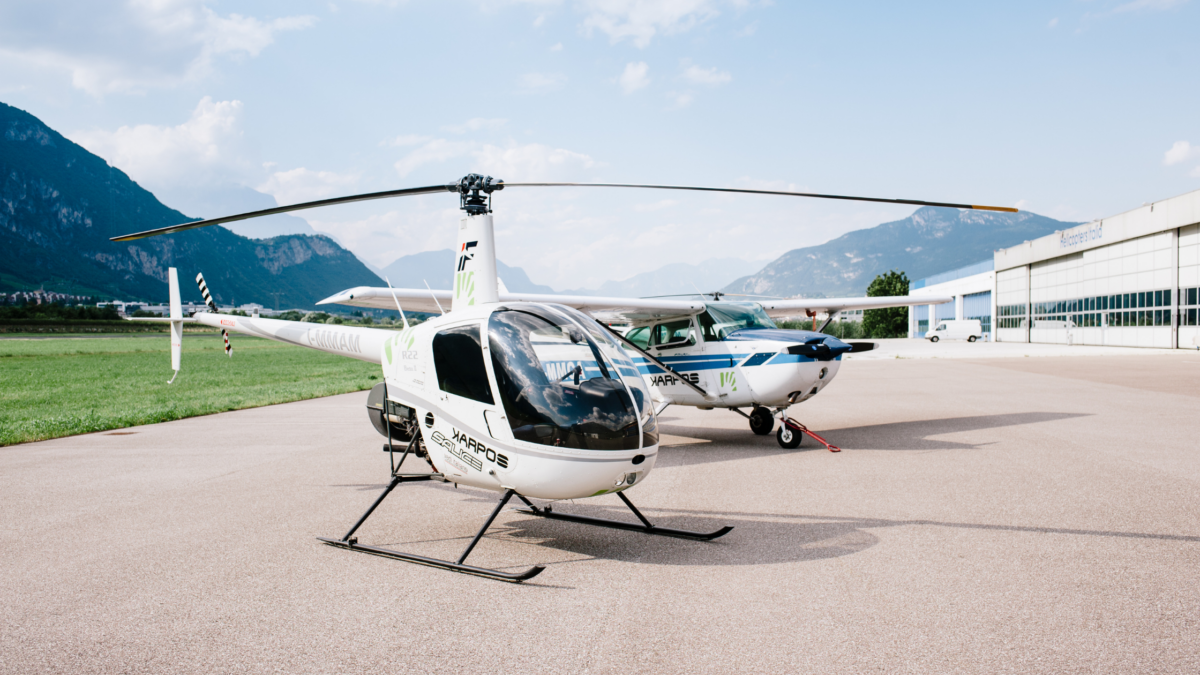
Surely you already have all the tools to work, the experience to do it best and the necessary professionalism but…
Would you like to learn to optimize your resources, better manage your fleet, staff and customers? Would you like to have new tools to avoid wasting time?
If you need a management tool, our software is the right one for every type of flight school.
Based on organizational theories such as the Theory of Constraints and Revenue Management, it not only offers digitalization and automation of processes but also new information models necessary to make decisions in the correct and most consistent way for your organization.
Go to the dedicated section, request a demo and discover the unique features of this tool, created by people who have been working in the management of flight schools and fleets for more than 20 years.

How much time do you invest in explaining to your future students how the courses work, what they are for, what qualifications you get?
By offering your students to watch our tutorials you will be able to comply with that minimum basis of information that new students must have before deciding which course to attend.

Provide future students with a start pack with the book “Learn Before Flight” which includes all our tutorials in written format, combined with the model of managing a school to immediately understand how to approach this world.
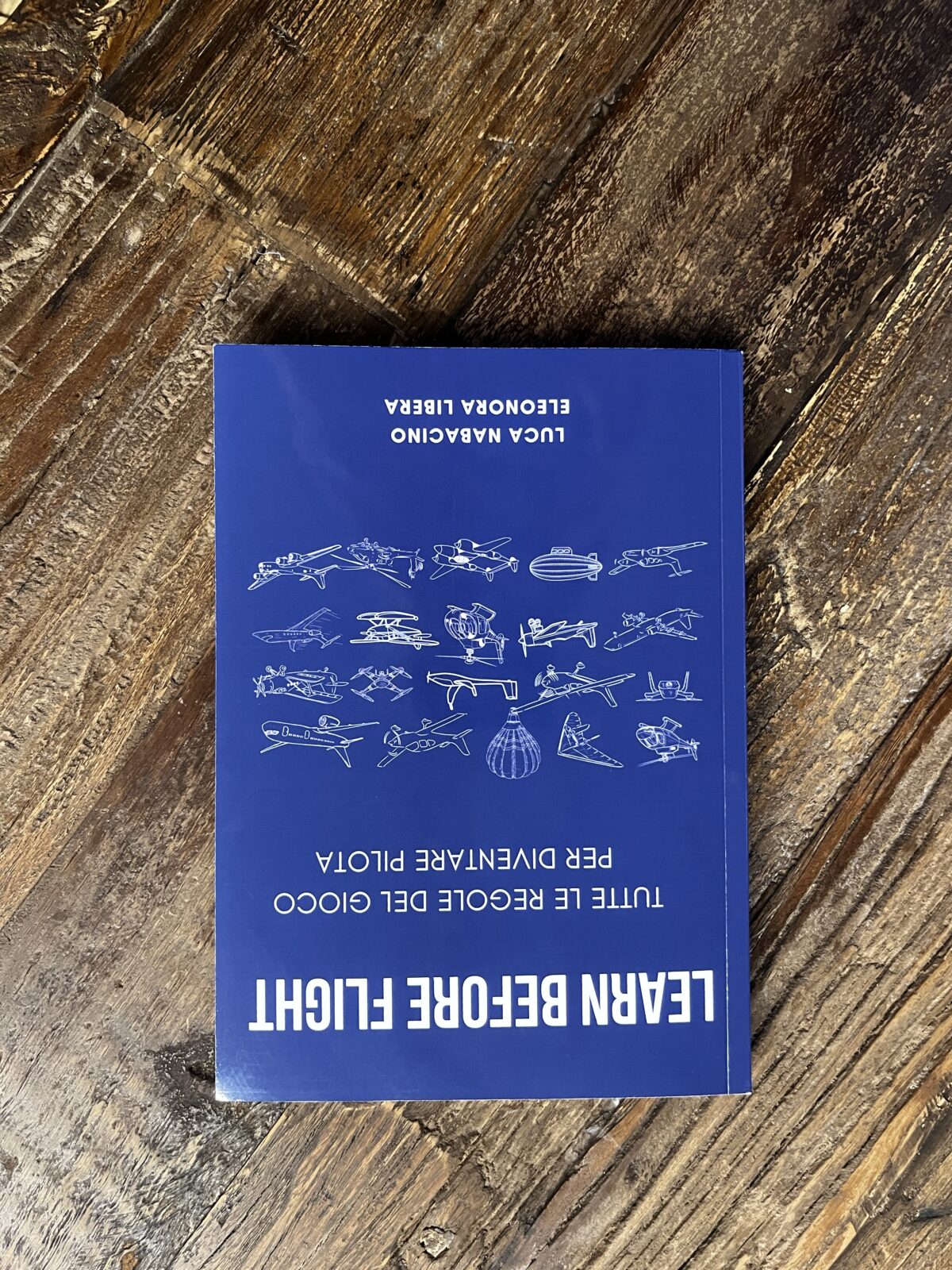
WORK IN PROGRESS
Learn with our book “Gain Before Flight” how to make the numbers go round in your flight school to make money and make it safe.
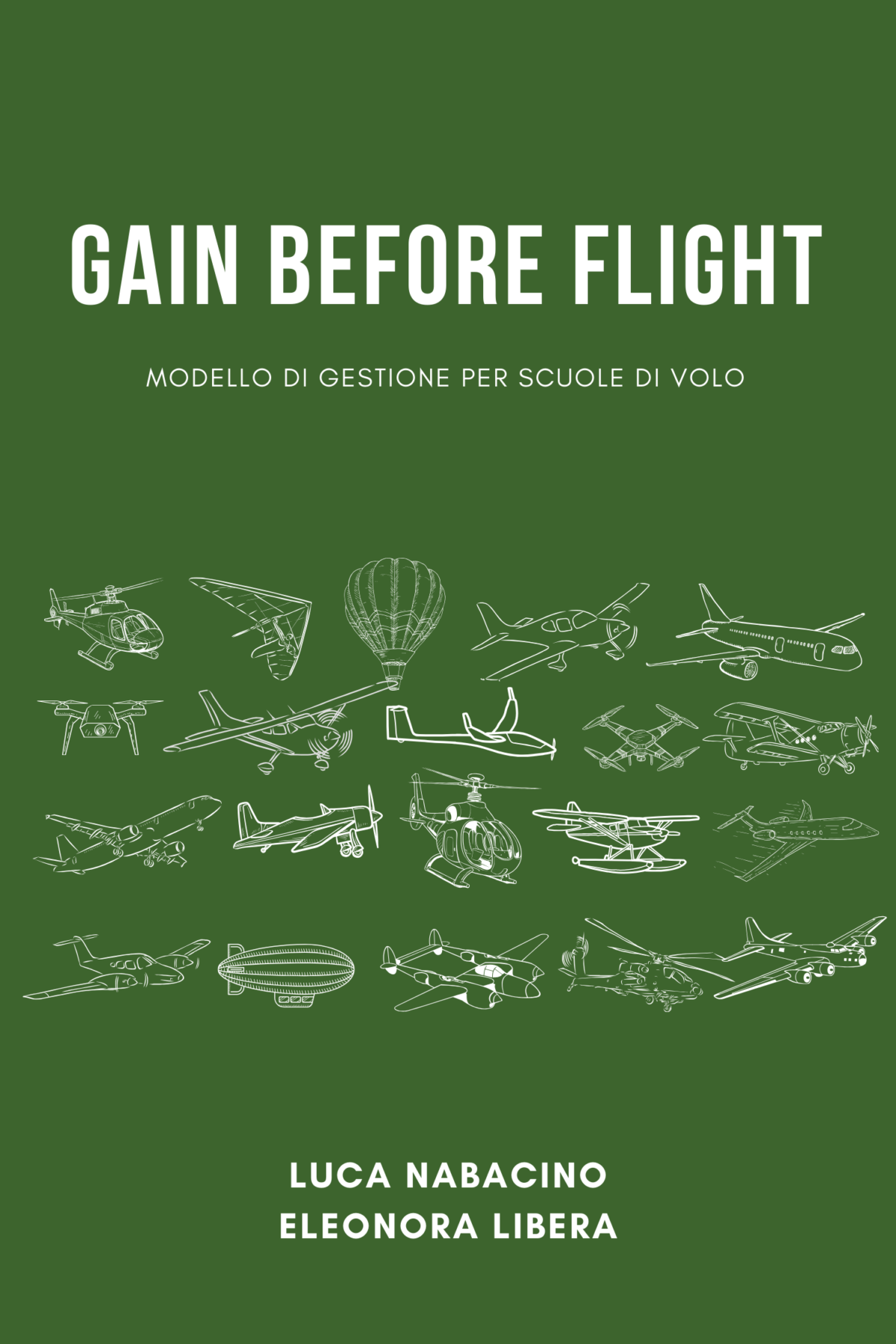
Download the PDF extract from our “Learn before flight” manual that explains how flight licenses are divided by aircraft category and by type of activity you want to carry out.
Go to our publications section to download more free material or to purchase our manuals.
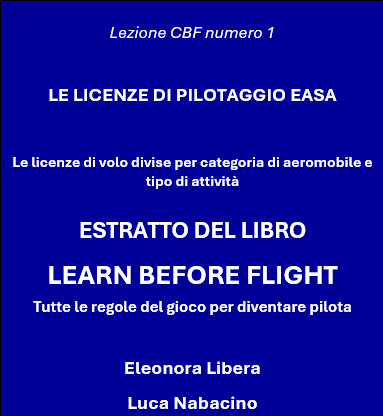
Download the PDF extract from our manual “Gain before flight” that explains how to register an aircraft in Italy.
Go to our publications section to download other free material or to purchase our manuals.
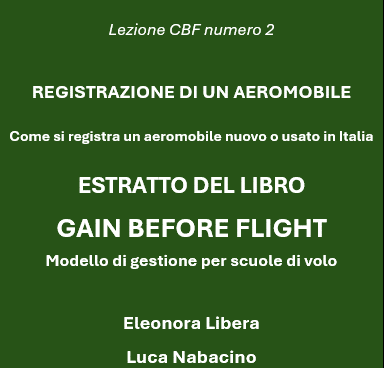
We put this question first because it is the only one you should never ask. Until I have covered all the fixed costs (those related to the aircraft and the general costs of the structure) I will not have earned anything, then instead my earnings will be equal to the sale of the flight hour minus the cost of fuel and maintenance. Practically the entire book will be based on this reasoning.
At the limit you could ask me how many flight hours you have to sell to cover the costs and from there you can understand how much you earn for subsequent hours. It is as if there were three flight regimes: the first to cover the costs related to that specific aircraft (for example: depreciation and insurance), the second in which the operating margin contributes to covering all the fixed costs of the structure to which all the other aircraft, the theoretical courses and any other service sold will also contribute (and up to that point I am only at a loss) and the third in which, once the expenses are covered, every Euro of my sales (net of variable costs) is pure profit.
Each aircraft has a selling price, a variable cost and fixed costs specifically related to that system (for example: depreciation and insurance). The selling price minus the variable costs give me the gross operating margin (which we will talk about a lot in this manual) with which for the first X hours I will cover the fixed costs of the system, then with the following Y hours I will cover the fixed costs of the structure and then I will start to create profit. Obviously the profit is given by the sum of the gross operating margins of all the systems minus the general costs of the entire structure; therefore, it is difficult to say that those 1,000 Euros of profit come to me from the use of an aircraft, or another. On the contrary, if with an aircraft I cannot even sell the X hours to cover the costs related to that system, I will know that the 1,000 Euros of loss come from there.
If you want you can calculate how many hours you have to sell to cover depreciation and insurance but then the rest of the hours enter into that production mix that you have to choose to cover all the fixed costs. The final answer is: a vehicle must fly as many hours as I can program in a year (assuming I can sell them).
If I sell them but can’t fly them I have a problem, if I can fly them but can’t sell them I have another problem.
If I know how many flight hours I can fly a maximum of in a year with my fleet, that these total hours can repay all my fixed costs, I can calculate how many students I need to have with a simple calculation, but the difficult part is understanding how long it will take them to complete the course, because if I sell 10 courses of 200 hours I will have sold 2000 flight hours, but it is very different if they are flown in one year or in two years. Let’s leave the flow of considerations to be made on resources, the target of sales, the margins of the economy of scale and the flow of delivery to the chapter on the business model.
Each instructor can fly a maximum of 1020 flight hours per year by regulation, but considering holidays, rest, illnesses and weather, maximum lessons per day to have time for briefing and debriefing, theoretical lessons, meetings, standardizations, moments to organize the work and everything needed to fly safe that is not flying safe… an instructor who flies 600, flies a lot. At this point if I know how many hours I have to do in a year based on the courses I have sold and the speed of my students, I understand how many instructors I need.
If I sell an hour of flight for 500 Euros, fuel costs 60 Euros and maintenance 40 (cost or set aside), I have a margin of 400 Euros. If depreciation and insurance cost 80,000 Euros, the cost of the first hour will be 80,100 Euros and the 201st hour will be 100 Euros. You always have to consider whether I am in the first regime (I am still covering the costs of the investment) or in the second regime (the margin goes to pay the costs of the structure).
The maintenance issue is perhaps the most difficult to take into consideration. An aircraft can have a calendar and hourly maintenance, ordinary or extraordinary. A school can have technicians and an internal certification or a contract with an external workshop. In any case, it is good to set aside at least 10% of the flight hour sales to perform maintenance. And if you have a fleet of multiple aircraft, create a risk fund to cover any parts to be replaced or extraordinary inspections to be performed.
I can’t calculate how much to sell an hour of flight starting from the costs. I should divide all the fixed costs on the presumed annual hours, but then how do I do it for different aircraft models? Do I put a higher quota of fixed costs to recover? We will see in this manual the nonsense of this reasoning. The market does the pricing. An hour of flight of that model is sold at that price. That’s it. Then from the pricing made by the benchmark, the rates can be lowered if I have a homogeneous fleet of many aircraft, I can raise instead if I have an aircraft that is perhaps difficult to find in that area. The rate can be adjusted based on demand, based on other parameters, but not based on costs, this must be clear.
An aircraft is a registered movable asset that is evidently accounted for in the balance sheet by a flight school as an instrumental asset related to the company’s characteristic activity. It is therefore depreciated with a rate that in Europe ranges from 10 to 15%, even if the useful life of the vehicle is much longer. At this point, a longer civil depreciation can be foreseen or IFRS accounting systems can be used in the case of leasing. For some types of aircraft (in particular helicopters) however, it is necessary to consider the costs of the overhauls (general inspection or grand visit as you want to call it) that can greatly vary the value of an aircraft regardless of the fiscal or civil value, the year of construction or the total flight hours. We will talk about this in the last chapter.
If purchased by an airline (scheduled, non-scheduled, aerial work, flight school, etc.), the asset becomes a business tool and therefore the cost is fully deductible and the VAT on the purchase is fully deductible.
This is a very personal decision. Some schools prefer to collect the courses in full in advance according to a simple financial calculation that rightly the more I collect the better. Some schools prefer to collect a little at a time (always in advance) so as not to have too many debts with the students at the same time because, when I collect any amount, until I provide the service or deliver the product, I have contracted a debt with the customer. Here we are talking about philosophy more than economics and it is not up to us to say what is better. The important thing is not to sell courses that I am not able to provide within the pre-established times (for which the students could ask me for their money back) and not to give too many discounts on prepaid packages if I do not need liquidity because I transform a non-problem into a lower economic gain for no reason.